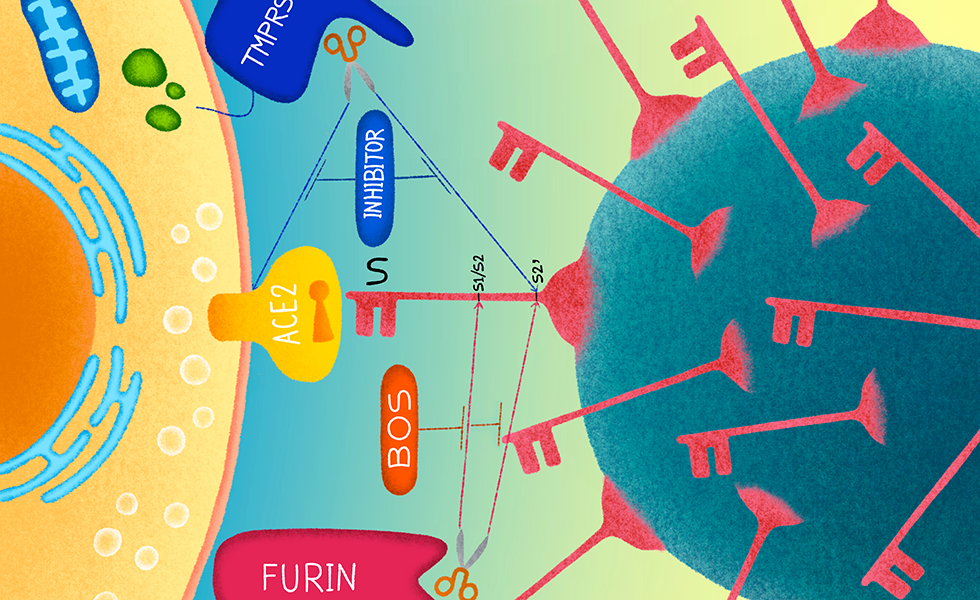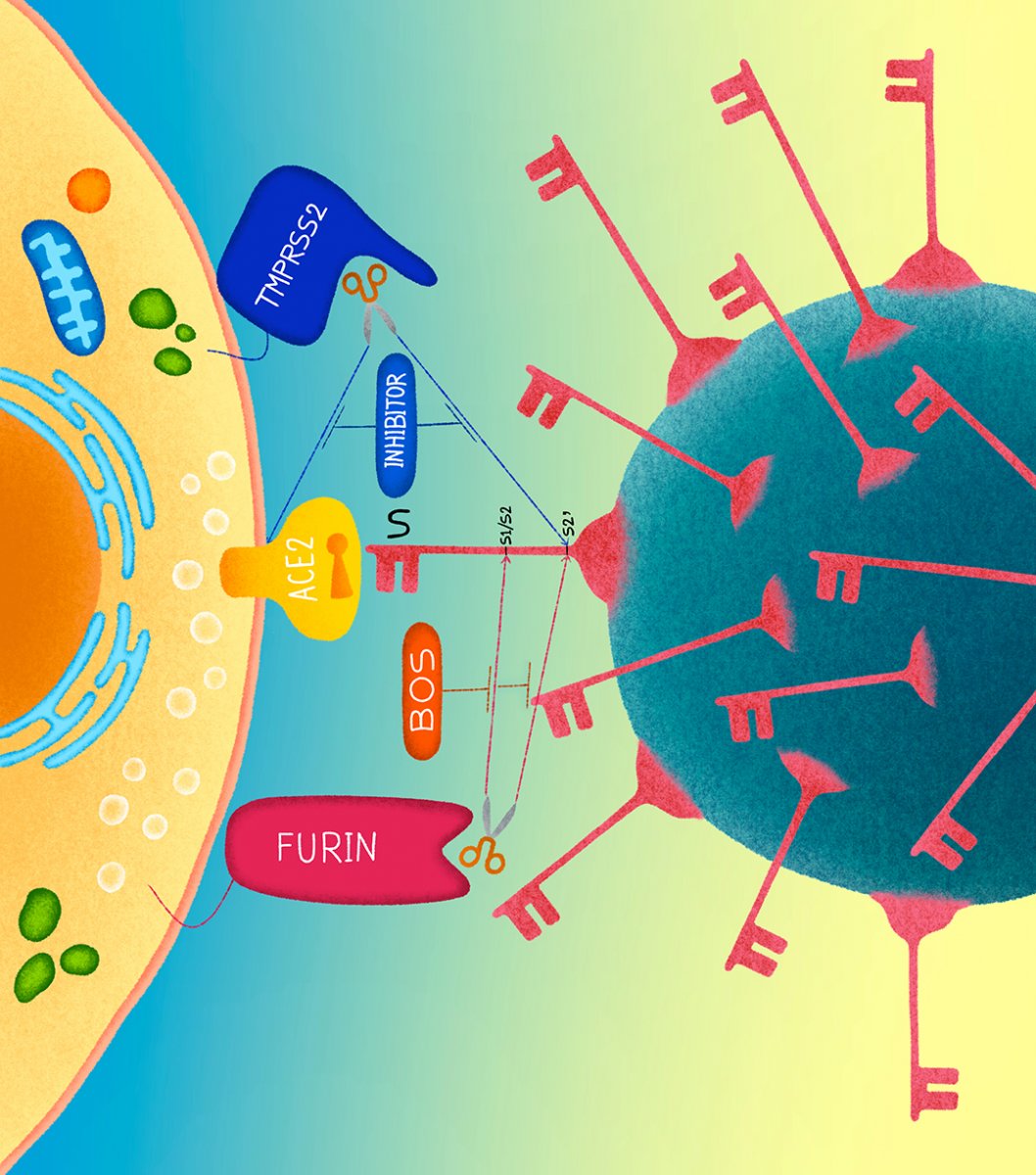
COVID-19, in its multiple variants and its ability to thwart efforts to wipe it out, still has a lot of unknowns that make it impossible for scientists to declare victory over the disease, despite vaccines. But now two Université de Montréal professors working at the IRCM have taken a big step towards understanding the coronavirus: they’ve identified and confirmed the power of two small molecules to block the infection of lung cells by SARS-CoV-2, the virus that causes COVID-19. The finding by the teams of biomedical professor Nabil G. Seidah, the IRCM’s director of biochemical neuroendocrinology research, and microbiology professor Eric A. Cohen, the IRCM’s director of human retrovirology research, is published in the Journal of Virology.
How it works – and why
Viral entry into lung epithelial cells requires cleavage (↓) of the viral surface Spike-glycoprotein of SARS-CoV-2 at two sites, S1/S2 (PRRAR↓) and S2’ (KPSKR↓) to expose a fusiogenic sequence allowing host membrane fusion with the infectious virus. Seidah’s team was already the first to predict that the 4-residue insertion (PRRA) in the Spike sequence would result in a typical proprotein convertase Furin-like cleavage at the S1/S2 sequence of PRRAR↓.
The new study validates this concept and shows unequivocally that Furin cleaves at both sites, thereby enhancing viral infection, say the researchers. They also show that another enzyme, TMPRSS2, cleaves the membrane-bound receptor ACE2 and releases it into the medium, promoting cellular entry of SARS-CoV-2.
The result: combining of potent small molecule inhibitors of Furin (BOS compounds) and TMPRSS2 (Camostat) blocks the live viral infection of lung cells by more than 95 per cent.
Another weapon to fight COVID-19
SARS-CoV-2, the etiological agent of COVID-19, has caused more than 6 million deaths worldwide, and that number is still rising. Seidah and Cohen say their powerful new antiviral approach will help reduce the spread of SARS-CoV-2.
That’s especially important, they add, as other coronaviruses are widely expected to appear in the near future. Having new treatments in the antiviral arsenal, they say, will help society better prepare for future pandemics.
Acknowledgements
This work was supported in part by CIHR Foundation grants (NGS: # 148363) and (ÉAC: # 154324), a Canada Research Chairs in Precursor Proteolysis (NGS: # 950-231335), a CIHR CHAMPS Team Grant # HAL 157986 (NGS and ÉAC), Réseau SIDA maladies infectieuses COVID-19 initiative (ÉAC and NGS). We thank Boston Pharmaceutical for having generously provided the BOS-inhibitors. The authors also thank the Quebec public health laboratory for providing the infectious isolate LSPQ1 SARS-CoV-2.
About Dr. Nabil G. Seidah
Recognized for his work of international significance, Dr. Nabil G. Seidah has left his mark on recent scientific history with his work on the role of proprotein convertases, with the discovery of the proprotein convertase PCSK9 and its involvement in certain cardiovascular diseases related to high LDLc levels (atherosclerosis, heart disease, and metabolic disease).
He is also:
- Director, Biochemical Neuroendocrinology Research Unit at the IRCM
- Full Research Professor, Department of Medicine (accreditations in Molecular Biology and in Biochemistry and Molecular Medicine), Université de Montréal
- Adjunct Professor, Department of Medicine (Division of Experimental Medicine), McGill University
About Dr. Éric A. Cohen
Recognized internationally for his work on the human immunodeficiency virus (HIV), Dr. Cohen quickly mobilized the know-how and expertise of his virology laboratory to participate in the global effort to prevent and control the COVID-19 virus.
He is also:
- Director, Human Retrovirology Research Unit at the IRCM
- Full Professor, Department of Microbiology, Infectious Diseases and Immunology, Université de Montréal
- Principal Investigator, Canadian HIV Cure Enterprise (CanCURE)

Here is, schematically, the mechanism allowing the combination of two molecules to block 95% of the living viral infection of lung cells. (work of Dr. Seidah and Dr. Cohen, from the IRCM). Credits: Yves Dumont




